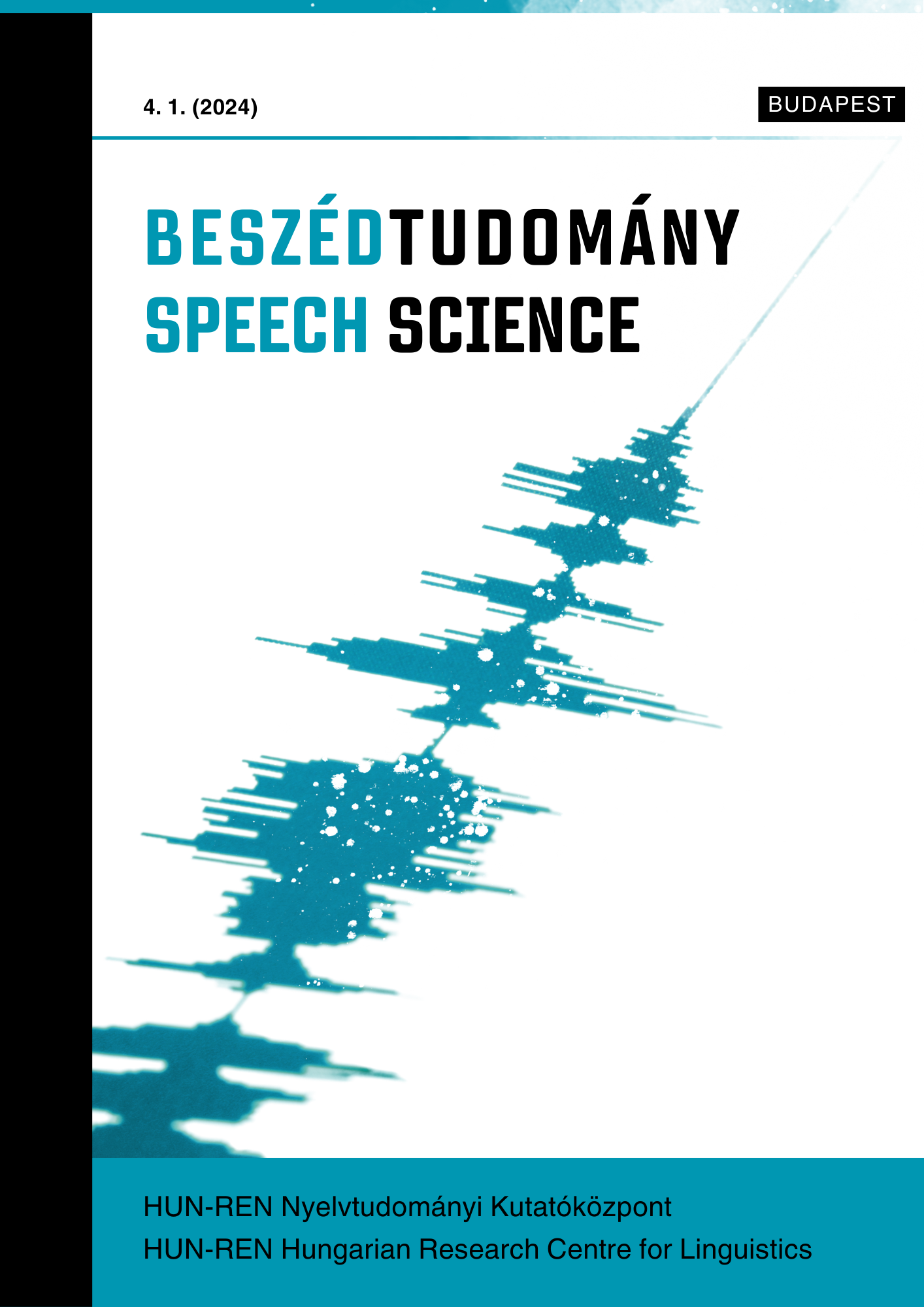Tanulásban akadályozott (enyhe értelmi fogyatékos) fiatalok alaphangjellemzői a spontán beszédben
Absztrakt
Disorder of intellectual development (intellectual disability) is a collective term that is defined by three factors: reduced intelligence, deficits in adaptive skills, and the appearance of symptoms before the age of 18. Individuals with intellectual disability often experience impairments in general cognitive functions such as thinking and spatial orientation, which significantly impact their language production and perception. This study examines the prosodic structure in spontaneous speech of young adults with mild intellectual disabilities. The main hypotheses are: (1) in all types of spontaneous speech, fundamental frequency is higher in people with mild intellectual disabilities; (2) there are differences between the two genders in prosodic characteristics, the average fundamental frequency of women is higher, and their vocal range and interval are wider compared to men; (3) in four types of spontaneous speech, there is a difference in prosodic characteristics.
The study involved 16 participants with mild intellectual disabilities (8 women and 8 men), with an average age of 19.5 years, and 16 mentally healthy control subjects (8 women and 8 men) of similar ages. The classification of mild intellectual disabilities was determined based on the BNO code and IQ values obtained from expert committee documents.
Four types of audio recordings were created for the study, including a two-part interview, picture description, and narrative recall. The recordings were annotated using Praat software, and scripts were utilized during the analysis to ensure accuracy. The scripts facilitated the determination of average fundamental frequency (f0), f0-minimum, and f0-maximum values for each speech segment. Additionally, the vocal range and interval were calculated for each speech type and segment, representing the distance between the highest and lowest fundamental frequency values.
According to the results, the average fundamental frequency was higher in the speech of people with mild intellectual disabilities in four types of recordings, and in terms of gender, the average f0 was higher for women, as expected. Furthermore, there was a difference between the prosodic characteristics of each speech type.




